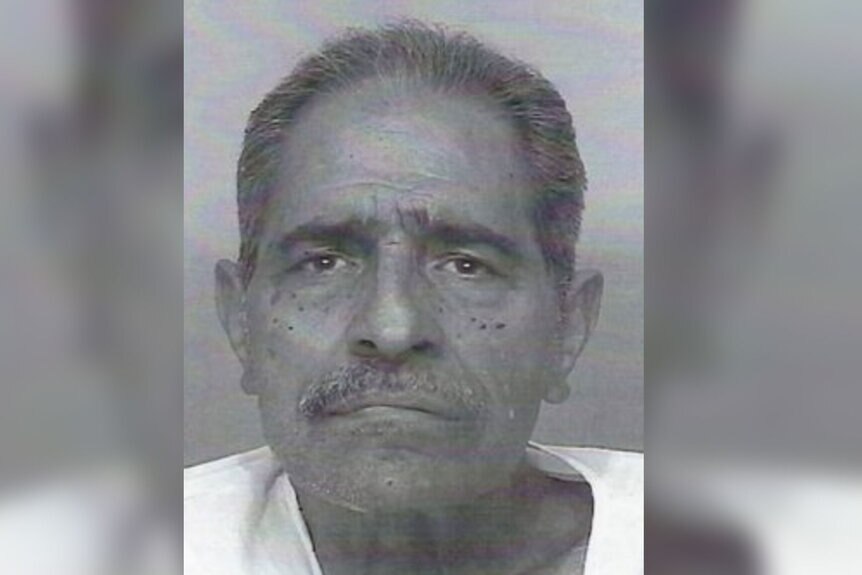Create a free profile to get unlimited access to exclusive videos, breaking news, sweepstakes, and more!
Five Times Old Injustice Was Righted Through Dogged Investigation
Sometimes justice comes for victims of heinous crimes years — or even decades — later. Get ready for “Injustice With Nancy Grace” with these five cases that were eventually solved through dogged investigation.

In Oxygen’s new series “Injustice With Nancy Grace,” premiering Saturday, July 13, at 6/5c, veteran prosecutor and legal analyst Nancy Grace will walk viewers through eight hand-picked cases that got under her skin. Grace will apply the same investigative rigor she used to bring to the courtroom, as well as bring her unique, no—holds-barred analysis, to bear on these shocking criminal cases.
In the annals of true crime, there are hundreds of cases in which justice for the victims or families of the victims didn’t come for years. It’s only thanks to the diligence of investigators and modern technological advancements that these cases are eventually solved, and justice delivered. From the oldest cold case in New Hampshire history to a unique Twitter strategy employed by a California police department in search of the person who killed an 11-year-old more than 40 years before, justice in these stories arrived late, but arrive it did.
Before Nancy Grace’s new true-crime endeavor premieres, check out these five times that injustice was finally righted years — or even decades — after the crime.
1. New Hampshire’s Oldest Cold Case
Everett Delano, a 49-year-old retired Navy veteran, was working a shift at Sanborn’s Garage in Andover, New Hampshire, when a robber entered, shot him three times in the head and made off with around $100. That was in 1966, and over the next five decades, Delano’s murder became the state’s oldest cold case — until February.
After determining that Delano’s death was a homicide, no suspects were identified and no weapon was found in the investigation.
The case was cold until it was reviewed by New Hampshire’s Cold Case Unit in the fall of 2013, when a member of Delano’s family brought the case to its attention. When the state’s CCU ultimately started its analysis, investigators discovered that while fingerprints taken from the bathroom sink at Sanborn’s were mailed to the FBI, they weren’t submitted to the Automated Fingerprint Identification System, which New Hampshire began using in 1998, according to the state attorney general’s report.
The fingerprints from the faucet were determined to be those of Thomas Cass, who was 67 in 2013, and living in Orleans, Vermont.
Cass, who had an extensive criminal history, denied having any knowledge of the murder, adding that he didn’t even know where Andover was.
In November 2013, Cass provided investigators with a voluntary DNA sample, but refused to submit to a polygraph test. A few months later, CCU investigators interviewed Cass, and told him that they found forensic evidence that linked him to the 1966 murder. They also executed a search warrant to find the weapon used, but turned up nothing.
On Feb. 24, authorities received word that Cass committed suicide — he believed police were coming for him.
Later, Cass’s live-in companion told investigators that Cass had once said, ‘You never talk about something that has no statute of limitations.’”
In the report’s legal analysis, authorities said that Cass’ fingerprints, his “statute of limitations” statement to Spainol and his suicide amounted to admissions of guilt, adding that it’s “a fair inference that he killed himself to avoid going back to prison."
2. Oxygen Helps Solve A 15-Year-Old Case
Jesse Hogue, 73, was arrested on March 21, 2019, in Pueblo County, Colorado, for the 1994 murder of his ex-wife, Jackie Hogue. Jackie's case had gone cold before Kelly Siegler and Oxygen’s "Cold Justice" team re-examined her murder during the show’s last season.
A mother of four, Jackie Hogue was found dead in her bed by her teenaged sons in 1994, of two gunshot wounds to the back of her head. She had also been sexually assaulted, according to KKTV News.
The gun used to kill Jackie was never recovered and no one had previously been charged with her murder.
Following an investigation by Oxygen's "Cold Justice" team, new circumstantial evidence was found that made the case against Jesse Hogue more compelling to the 47th District Attorney's Office in Colorado.
In the episode, an anonymous witness who said she was close friends with Jackie recalled Jesse talking about the murder. "He started crying, and he told me if he could go back to that day that Jackie would be alive," said the witness.
When pressing Jesse for clarification, the witness claimed that Jesse said police could not convict him because they would never find the gun. "He said, 'No they can't convict me unless they find the gun,' and that's when he told me that y'all would never find it. That y'all were too stupid," said the witness.
Siegler and the "Cold Justice" team, armed with circumstantial evidence, took their questions to Jesse Hogue himself. Hogue, who moved to Colorado from Texas after the murder, took part in an interview, which aired on the show. In the interview, Hogue maintained his innocence, saying that he did not murder Jackie.
Despite his claims of innocence, the circumstantial evidence found by Siegler and team was enough for a grand jury to indict Hogue, who was arrested during a traffic stop on March 21, 2019, and held without bail, pending extradition to Texas.
3. Justice After 23 Years For Three Prostitutes Murdered Execution-Style
It took 23 years for the murders of three prostitutes in Spokane, Washington, to be solved, and their murderer now sits in prison, serving three consecutive life sentences without the possibility of parole.
In 1990, the bodies of Yolanda Sapp, Nickie Lowe and Kathleen Brisbois were found in various locations around Spokane, according to The Spokesman-Review’s reporting. They were all naked, and had all been shot in the head with a .22 handgun.
The case sat, unsolved, until the 2012 arrest of Donna Perry, formerly Douglas Perry, was taken in by feds on firearms charges, the Spokesman-Review reported. A pair of Spokane police and sheriff’s department detectives used DNA evidence to link Perry to the decades-old murders.
During Spokane authorities’ 2012 investigation, it was learned that a prison inmate claimed Perry bragged of murdering as many as nine prostitutes, calling them “pond scum,” the paper reported.
The murders were initially thought to be the work of serial killer Robert L. Yates, according to the Spokesman-Review.
Donna Perry was convicted of the murders and sentenced in 2017. She walked into her sentencing smiling while family members of the victims waited to address her, according to the Spokesman-Review.
Judge Michael Price told Perry that he had never tried a case before in which the killer did it “seemingly for the sport of it, and no other reason,” the paper reported.
4. California Rape-Murders Solved Decades Later
In 1977 and 1978, two young women in California were raped and murdered; it wasn’t until this year that the case was closed.
Jane Morton and Patricia Dwyer’s likely killer, Arthur Ruby Martinez, however, died of cancer in prison in 2014, according to USA Today’s reporting. Morton was found a day after going missing, with her throat slit, while Dwyer was found the next year, stabbed to death in her home. Both of them had been tied-up and sexually assaulted, according to USA Today.
In June 2017, the San Luis Obispo County Sheriff’s Office re-investigated the murders, following a lead involving DNA from federal investigators, according to a sheriff’s office news release.
Martinez was nearby when the murders occurred, and considered a suspect — he was already on parole for attempted murder and rape — but police were never able to definitively link him to the crimes, according to USA Today.
The trail in 2017 led police to Martinez’s old girlfriend, who provided them with an old razor blade of his, USA Today reported. His DNA matched the original case evidence, and a witness who helped police with the initial sketch of the perp back in the 70s confirmed that Martinez was the person she saw.
Martinez had already died in prison, however. After 16 years in jail for the prior charges, USA Today reported, he escaped, only to turn himself in to authorities in 2014, allegedly to take advantage of the free medical care in prison to treat the cancer that ultimately killed him.
Still, California Attorney General Xavier Becerra praised the longtime effort by authorities, and said he hoped that the resolution to the case, even though Martinez was long gone, brought “a measure of justice to the families of the victims.”
5. Forty-six Years Later, Justice For A Young Girl Strangled To Death
Earlier this year, an arrest was made in the decades-old strangling death of 11-year-old Linda Ann O’Keefe. The case went cold for so long, that the girls’ parents weren’t even alive to see the suspect brought in.
Investigators used DNA and genetic genealogy to bring in the suspected killer, James Neal, according to ABC News.
Linda disappeared on her way home from summer school in Newport Beach, California, in July 1973, and her body was found the next day. Neal was living in the area at the time, working in construction, and he eventually moved to Florida and changed his name, according to ABC’s reporting.
Perhaps most notable about the renewed effort to bring Linda’s killer to justice was a Twitter campaign waged by Newport Beach Police last year, in which they suspended all normal Twitter posts for two days and Tweeted in Linda’s voice.
“Hi. I’m Linda O’Keefe,” Oxygen.com reported the first tweet reading last July. “Forty-five years ago today, I disappeared from Newport Beach. I was murdered and my body was found in the Back Bay. My killer was never found.”
The police department had just recently used DNA technology to create snapshots of the suspects in the case, and wanted to spread the images in hopes of finding O’Keefe’s killers, department representatives told Oxygen.com.
The department’s Twitter page received nearly 3 million impressions, and many people from the community became engaged in sharing O’Keefe’s story, according to Oxygen’s reporting.
Investigators used DNA from the 1973 crime scene to project what the suspect may have looked like decades later, and eventually matched the scene DNA to Neal’s family DNA, stored in a genealogy database. He was arrested in Colorado this February, according to ABC.
Don’t forget to tune in Saturday, July 13, at 6 p.m. ET/PT, as television's most respected legal analyst Nancy Grace gets to the bottom of some of the most challenging and multi-layered true crime stories on “Injustice With Nancy Grace.”



































